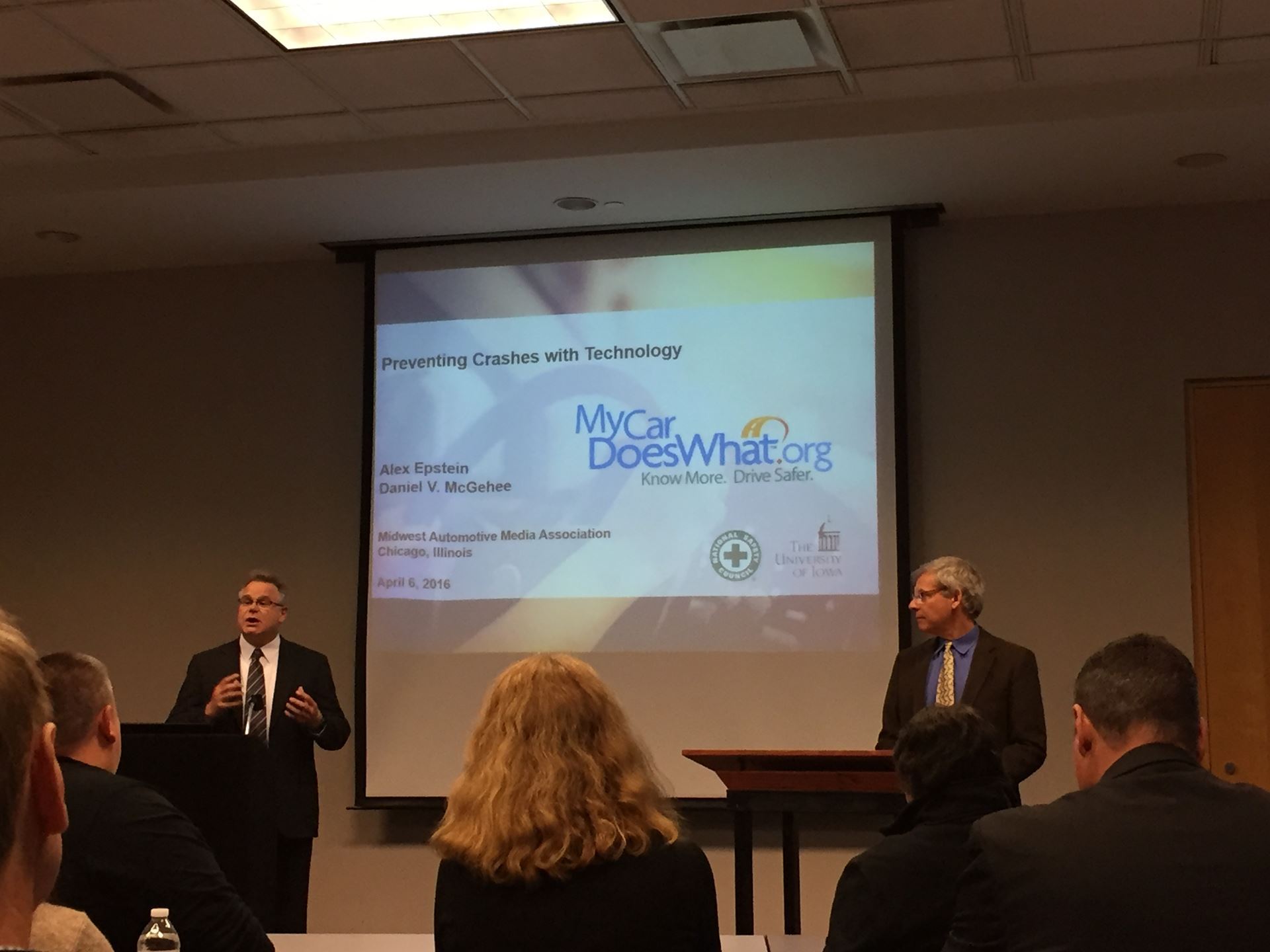
OAKBROOK TERRACE, Illinois – The National Safety Council’s Alex Epstein and the University of Iowa’s Dr. Daniel McGehee, from the university’s transportation and vehicle safety research division, served as the guest speakers during the monthly Midwest Automotive Media Association (MAMA) meeting to talk about their new initiative, “My Car Does What?” Perhaps exactly how it sounds, the My Car Does What campaign was designed to put consumers in the driver’s seat when it comes to learning about safety and technology features found in vehicles today.
According to the National Safety Council and the University of Iowa, 95 percent of car crashes are due to driver error. However, new vehicle technology can help prevent or greatly reduce the severity of the crash. The technology is out there, but the issue the NSC and the University of Iowa are finding is that consumers do not know much about how the tech works or even how to read some of the icons within their vehicles – ultimately defeating the entire purpose of the technology being present in the vehicle.
According to McGehee, one of the most exciting tech advancements out there today is automatic braking. For those within the automotive industry, that term can sound tired – archaic even – when up against some of the forthcoming advancements such as driverless cars; however, the reality is most consumers are far behind this curve. For example, if automatic braking is present within a vehicle, most do not know how to operate it or what signs to look for when it’s about to kick in (i.e. does it kick in at any speed or just after 30 mph?). Studies show that people who know how to use the technology can decrease their risk of an accident, but 40 percent of people reported their vehicle operated in a manner they didn’t expect and 33 percent had to call their dealership or turn to Google for more information.
The National Safety Council and the University of Iowa have teamed up to provide an online, mobile- and tablet-friendly resource, MyCarDoesWhat.org, to help educate consumers. The website’s homepage lists the 28 technology and safety features present on vehicles today including: backup camera, antilock braking system, blind spot monitor, automatic emergency braking, lane departure warning, tire pressure monitoring system, adaptive cruise control, adaptive headlights, automatic parallel parking, backup warning, curve speed warning, drowsiness alert, electronic braking assistance, electronic stability control, forward collision warning, high speed alert, hill descent assist, hill start assist, lane keeping assist, night vision, obstacle detection, parking sensors, pedestrian detection, push button start, rear cross traffic alert, road surface warning, sideview camera and traction control.
To educate people on the features, each has an identifiable icon next to it. The responsive site is designed to help serve as an easy-to-navigate online manual for people who don’t want to spend hours thumbing through their hard copy booklet. Additionally, the website features videos, easy-to-read infographics and even fun games to help people better understand their vehicle’s functionalities.
While there isn’t an industry standard for technology or safety feature terminology (naturally, each brand wants to distinguish itself from its competition), MyCarDoesWhat.org is aimed to help to bridge the gap for people wanting to better understand their car’s current features and determine what’s most important to them when shopping for a new vehicle. Learn more here.

